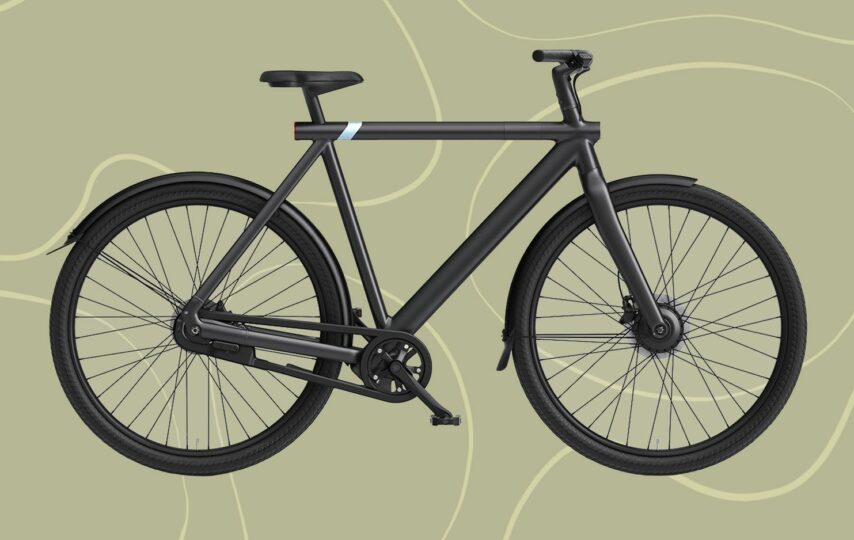Are you ready to revolutionize your cycling experience? Electric bicycles have emerged as a game-changer, bringing together eco-friendliness and technology in the world of transportation. These bikes come packed with advanced features that enhance their efficiency and convenience. In this blog post, we explore the technological elements that make electric bicycles stand out from traditional ones. From lithium-ion batteries to smart sensors, we delve into how these innovations are transforming the way we cycle. Join us on this journey as we uncover the latest advancements in electric bicycle tech!
Types of Electric Bicycles
Electric bicycles are powered by an electric motor that can be plugged into the wall to provide power. There are a variety of types of electric bicycles, including those with pedal assist, those with throttle only, and those with both pedals and throttle. Electric bicycles can also be combined with other forms of transportation, such as walking or using public transportation.
There are many different types of electric bicycles available on the market today. Some have a pedal-assist, which means the rider can push on the pedals to help power the bike, while others have a throttle-only mode where the rider doesn’t need to use their feet at all. There are also hybrid electric bicycles that combine features from both types of bikes. These bikes usually have a pedal assist mode and a throttle mode so that the rider has control over how much power they’re using.
Electric bicycles can be used for a variety of purposes, including commuting to work or school, getting around town, or exploring new neighborhoods. They’re also great for leisure activities like riding trails or going for a scenic ride. 1000w folding electric bike provides more comfort than traditional bikes because they don’t require pedaling effort. Instead, you simply turn the pedals to get moving and let the electric motor do all the work. There are many different types of electric bikes available on the market today, each with its benefits and drawbacks. It’s important to choose one that fits your needs and preferences carefully before buying it.
How Electric Bicycles Work
Electric bicycles use an electric motor to help power the bike and provide assistance when needed. These motors are typically located near the rear wheel, and their purpose is to help the bicycle move by providing a boost of energy when the rider pedals. In addition to providing power, electric motors also allow bicycles to be ridden with less effort than traditional bikes. This means that they are good for people who want an easier ride, or who are not used to riding a bike uphill.
For an electric bicycle to work, there needs to be a battery pack adjacent to the motor. This battery pack stores energy that is used when the motor is activated. The battery pack on an electric bicycle typically ranges in size from 10-pounders up to 50-pounders. These packs can be easily replaced, which means that you can keep your electric bicycle running without having to worry about replacing the entire unit.
When riding an electric bicycle, it is important to remember that you are responsible for ensuring that you have enough space on your bike path in order for your bike to operate safely. Electric bikes are not as stable as traditional bikes, so it is important that you take care when cycling on sidewalks or other areas where you do not have complete control over your vehicle.
Benefits of Using an Electric Bike
There are many benefits to using an electric bicycle. Not only do they help reduce pollution, but they’re also a great way to get exercise. Electric bicycles are much cheaper to operate than gas-powered bicycles, and you don’t have to worry about the cost of fuel. They’re also more environmentally friendly since they don’t produce any emissions.
Components of an Electric Bike
Electric bikes use electric motors to help you pedal. The motors are usually driven by batteries, which provide power to the wheels. You can think of an electric bike as a miniature motorcycle with a battery pack. There are several different types of electric bikes on the market. Some have flat pedals, while others have clipless pedals. Many also have suspension systems to make cycling more comfortable.
The size of an electric bike is based on the type of battery it uses. Most electric bikes use lithium-ion batteries, but some use lead-acid batteries. Larger electric bikes typically use lithium-ion batteries, while smaller ones use lead-acid batteries. An important part of an electric bike is the motor. Motor units come in a variety of sizes and shapes to fit different types of frames. Motors produce power by turning mechanical gears, which generate electricity using a motor generator or dynamo. There are three main types of motors: hub motors, brushless motors, and direct drive motors.
Battery Technology
Electric bikes use two types of battery technology-a lead acid battery and a lithium-ion battery. Lead acid batteries are the oldest type of battery and have been used in electric vehicles for decades. They have a high capacity, low discharge rate, and long life span. However, they are not as efficient as lithium-ion batteries. Lithium-ion batteries are more efficient than lead-acid batteries and can be used in electric bikes. They also have a higher discharge rate and shorter life span. But they can be charged faster and last longer than lead acid batteries.
Charging Systems
Most electric bicycles use a charging system that supplies power to the bicycle from an external power source, such as a wall outlet. Most systems use a standard AC outlet, but some systems use solar panels or battery packs. There are two main types of charging systems: direct current (DC) and alternating current (AC).
DC chargers are the most common type and work with standard AC outlets. They provide a steady flow of power and can be used to charge batteries or run electronic devices. AC chargers work with batteries or solar panels and typically have a higher wattage than DC chargers. This means they can quickly charge batteries or send more power to an electric bike’s motor. AC chargers are also known as “solar” chargers because they use solar energy to power them.
Gears and Brakes
Electric bicycles use electric motors and controllers to assist with pedaling, as opposed to a gas engine. They can have various degrees of assistance, from completely powered by the rider, to a lesser degree assisted by the motor only. In general, electric bike for sale is seen as environmentally friendly because they produce no emissions. Some electric bicycles are designed for use with removable batteries that can be recharged using an external power source.
The frame of an electric bicycle typically consists of one or more metal tubes, each of which contains a coil of wire wrapped around its outer surface. A controller mounted on the handlebars communicates with the motor via a wired connection and aids as needed. Most electric bicycles operate in three modes: pedaling alone, pedaling assisted by the motor (commonly called “pedal assist”), and fully powered by the battery.
Electric bikes are popular in Europe, where regulations are more supportive of environmentally friendly transportation options. In the US, there is still some debate about the benefits and drawbacks of electric bikes compared to traditional bikes. However, proponents argue that electric bikes provide environmental benefits because they produce zero emissions when ridden; this is in contrast to gas-powered motorcycles and cars whose emissions must be accounted for. Additionally, electric bikes are generally cheaper than traditional bikes due to their low costs associated with manufacturing and fuel consumption.
Conclusion
As the world becomes more and more digitized, it is evident that electric bicycles will play a major role in our future. The benefits of using an electric bike are numerous, from easier transportation to reducing greenhouse gas emissions. It is important to understand the technical elements that make these bikes so special before making a purchase so that you can reap all of their advantages.







